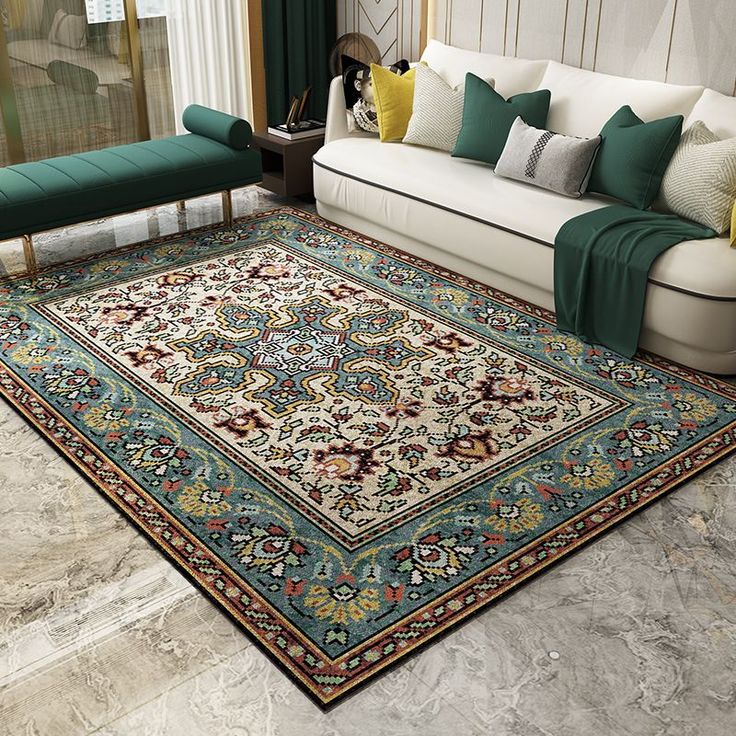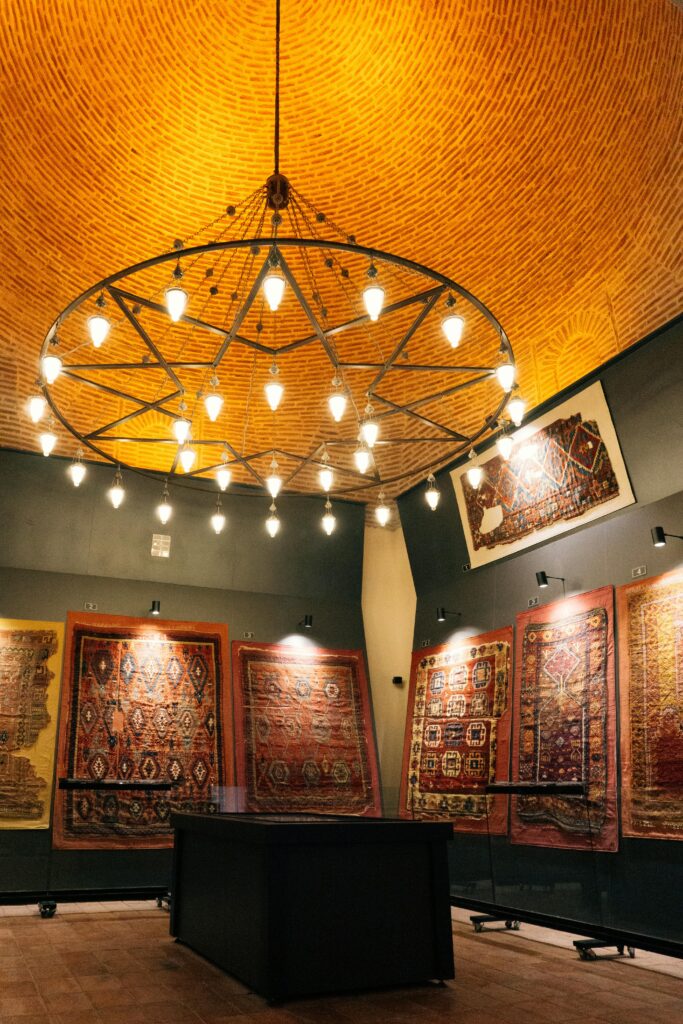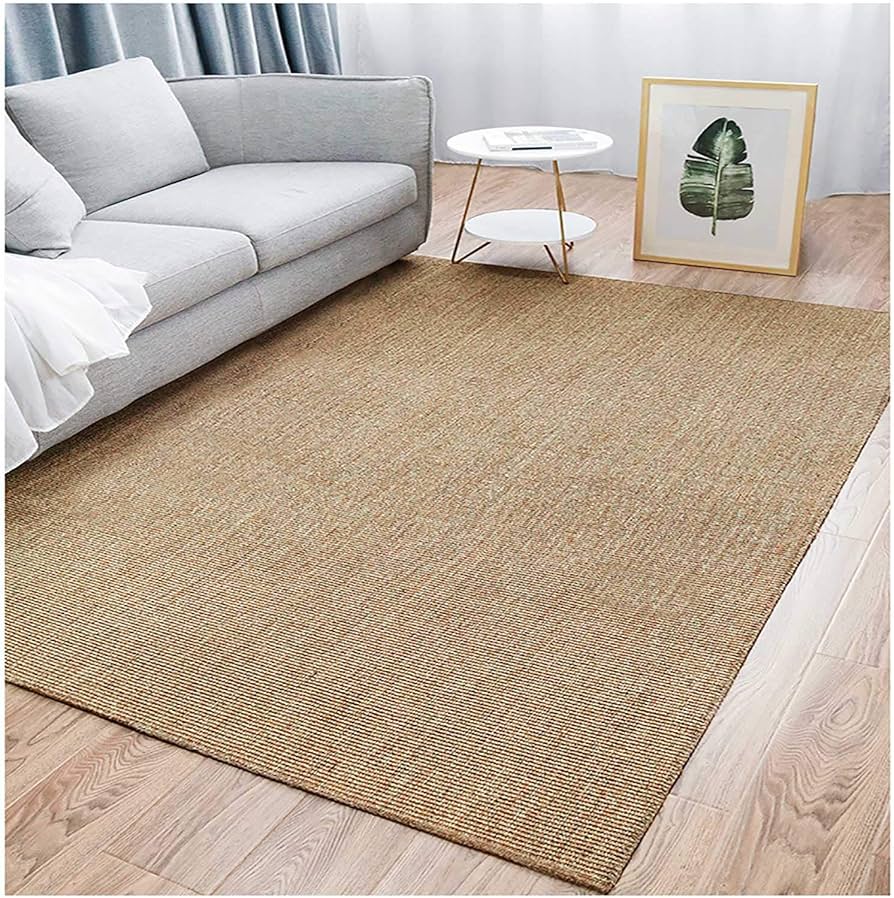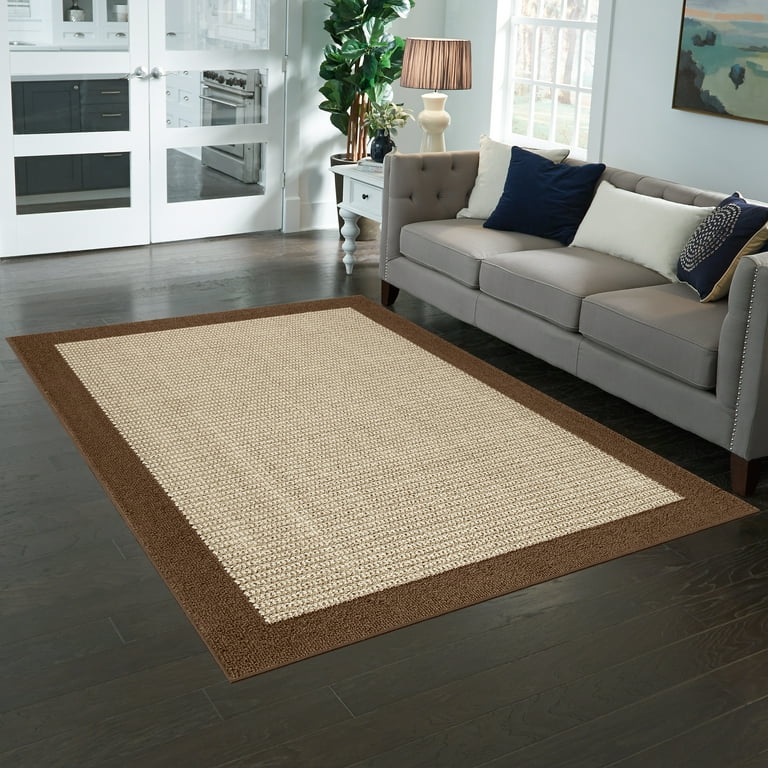Vintage Persian carpets trace their roots back over 2,500 years to the ancient civilizations of Persia. Persia, known for its contributions to art, architecture, and literature, also became renowned for its weaving traditions. The art of carpet weaving was passed down through generations, with each region of Persia developing its distinctive style, weaving techniques, and color palettes.
Historically, Persian carpets were woven by hand for both the nobility and everyday people. The first carpets were woven in the nomadic tribes of Persia, who used them for warmth and comfort while traveling. Over time, Persian carpets became a symbol of wealth and status, especially when the Safavid dynasty came to power in the 16th century. The Safavids established the city of Isfahan as a cultural and artistic center, where many of the most famous vintage Persian carpets were produced.
During this period, carpets became intricately designed with detailed motifs, such as floral patterns, geometric shapes, and depictions of animals and birds. This artistry was highly valued, and Persian carpets began to find their way into royal courts and the homes of the elite in Europe, the Middle East, and beyond.
Craftsmanship of Vintage Persian Carpets
The creation of vintage Persian carpets is a meticulous process that requires exceptional skill and patience. Weaving these carpets is a craft that takes years to master, and every piece is unique, even within a single design or region. Vintage Persian carpets are traditionally woven by hand using high-quality wool, silk, and cotton fibers. The choice of material greatly influences the texture, durability, and visual appeal of the final product.
Weavers use a technique called the “Persian knot” (or “Senneh knot”), which is known for its strength and precision. This knotting technique allows for the creation of highly detailed patterns and vibrant colors. Unlike machine-made carpets, which often use synthetic fibers, vintage Persian carpets are made from natural fibers, making them not only durable but also environmentally friendly.
The process of weaving a vintage Persian carpet can take months, depending on the size and complexity of the design. Skilled weavers carefully tie each knot by hand, often working from memory or guided by patterns passed down through generations. The weavers’ attention to detail ensures that the colors and patterns are evenly distributed across the carpet, resulting in a visually harmonious piece.

Types of Vintage Persian Carpets
There are many different types of vintage Persian carpets, each with its distinct design, region of origin, and purpose. Some of the most well-known types include:
- Kashan Carpets: Originating from the city of Kashan in central Iran, these carpets are known for their high-quality wool and intricate floral designs. They often feature a central medallion, surrounded by repeating motifs and vibrant colors.
- Isfahan Carpets: Isfahan is one of the most famous carpet-producing cities in Persia, and vintage Isfahan carpets are highly sought after by collectors. These carpets are known for their fine silk fibers and elaborate designs, often featuring floral and geometric patterns.
- Tabriz Carpets: Tabriz, located in the northwest of Iran, has a long history of carpet weaving. Vintage Tabriz carpets are known for their high knot density and wide range of designs, including both traditional Persian motifs and more contemporary patterns.
- Qum Carpets: Qum carpets are often made with fine silk, making them some of the most luxurious vintage Persian carpets. These carpets typically feature intricate floral patterns and vibrant colors, and they are often produced in smaller sizes for decorative purposes.
- Kerman Carpets: Kerman carpets, produced in the city of Kerman in southeastern Iran, are famous for their rich colors and intricate designs. These carpets often feature medallion patterns, floral motifs, and a sense of symmetry
- Heriz Carpets: Unlike other Persian carpets, Heriz carpets are known for their bold geometric patterns. These carpets are typically produced in the region around Heriz in northwestern Iran and are often used as decorative pieces due to their vibrant colors and striking designs.
The Significance of Vintage Persian Carpets
Vintage Persian carpets are more than just beautiful objects; they are symbols of cultural identity, heritage, and craftsmanship. Each carpet tells a story, whether through the symbolism of its patterns or the region from which it originates. The motifs on vintage Persian carpets often carry deep cultural meanings. For example, floral patterns may represent the natural beauty of Iran, while geometric shapes can symbolize harmony and balance.
In addition to their cultural significance, vintage Persian carpets are valuable investments. Due to their rarity, craftsmanship, and historical importance, these carpets can increase in value over time. Many collectors seek out vintage Persian carpets not only for their beauty but also as a way to preserve and protect a piece of history.
In the world of interior design, vintage Persian carpets are highly prized for their ability to add warmth, color, and sophistication to any space. Their timeless appeal makes them a versatile choice for both traditional and contemporary interiors. Whether placed in a living room, bedroom, or hallway, a vintage Persian carpet serves as a focal point that can elevate the entire room.
Caring for Vintage Persian Carpets
One of the most important aspects of owning a vintage Persian carpet is ensuring its proper care and maintenance. Given their value, it is essential to take steps to preserve the carpet’s beauty and longevity. Here are a few tips for caring for your vintage Persian carpet:
- Regular Cleaning: Vintage Persian carpets should be vacuumed regularly to remove dust and dirt. However, it is important to use a vacuum cleaner with a gentle suction setting to avoid damaging the fibers.
- Professional Cleaning: While regular cleaning can help maintain the carpet’s appearance, professional cleaning is recommended every few years. A professional cleaner will have the expertise to clean the carpet without causing damage.
- Avoid Direct Sunlight: Prolonged exposure to direct sunlight can cause the colors of vintage Persian carpets to fade. It is best to place the carpet in areas where it is not exposed to harsh sunlight for extended periods.
- Rotation: To ensure even wear, it is advisable to rotate your vintage Persian carpet every few months. This will prevent certain areas from becoming worn down more quickly than others.
- Protect from Spills: Immediately blot any spills or stains with a clean cloth to prevent them from setting into the fibers. Avoid using harsh chemicals or cleaning products, as these can damage the carpet.
Read also
- Discover the Charm of Persian Carpet House Dubai
- The Beauty and Durability of Sisal Carpets
- Top Trends in Sisal Carpets Dubai for Modern Interiors
Conclusion
Vintage Persian carpets represent the pinnacle of craftsmanship, history, and artistry in the world of textiles. These carpets are much more than mere decorative items; they are a testament to the rich cultural heritage of Persia and the skill of the artisans who weave them. From their intricate designs to their high-quality materials, vintage Persian carpets are a symbol of luxury, beauty, and tradition.
Owning a vintage Persian carpet is not just about possessing a beautiful piece of art; it is about preserving a part of history and culture that spans centuries. Whether you are a collector, an interior designer, or simply someone who appreciates fine craftsmanship, vintage Persian carpets are an investment that will continue to bring beauty, warmth, and character to any space for generations to come.





